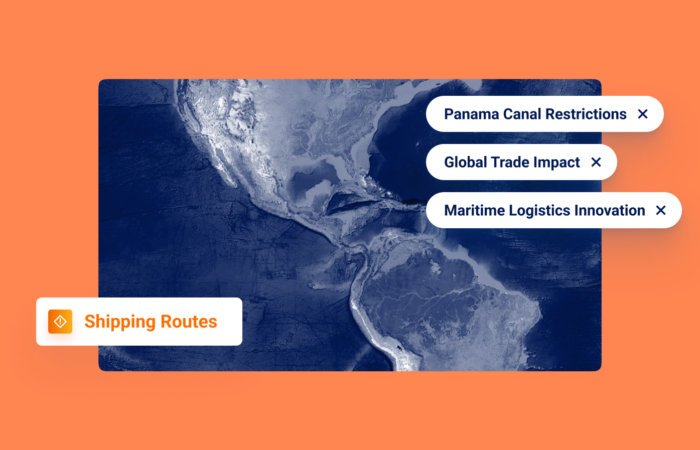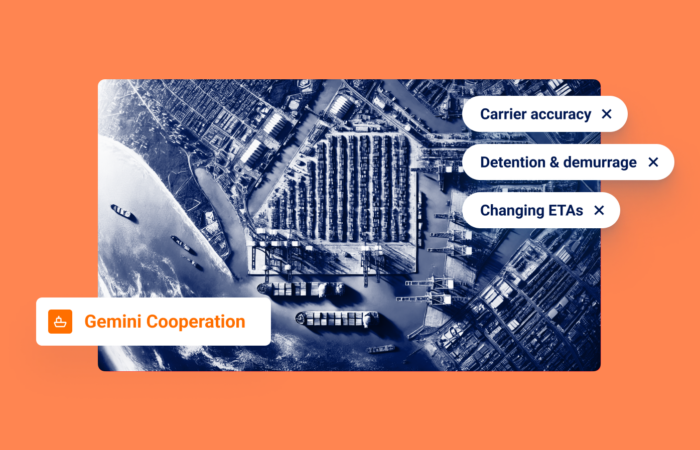Supply Chain Disruptions Require Resilience

What’s inside?
“Global supply chains are entering 2024 roiled by disruptions at two of the world’s crucial trade corridors – the Panama Canal and the Suez Canal – even as geopolitical tensions appear set to take a more prominent role in sourcing and distribution. That could potentially force countries and companies to redraw trade maps that have been built over decades…Wars in Ukraine and in the Middle East are threatening flows of grain, oil and consumer goods. Climate change and mass migration are disrupting trade lanes from the Panama Canal to the U.S.-Mexico border. Growing geopolitical tensions are making international supply chains ever more complex,” according to The Wall Street Journal.
These supply chain disruptions are not just logistical hurdles, but signify a deeper shift in the global trade ecosystem, urging a strategic reevaluation of traditional supply chain models – underscoring the need for resilience and innovation.
This blog aims to look at these multifaceted challenges and highlight how leveraging advanced technologies, such as Windward’s Maritime AI™ platform, can equip businesses with the agility and insight required to thrive in an increasingly volatile global supply chain landscape.
Understanding Supply Chain Disruptions
Supply chain disruptions have emerged as a critical challenge for global commerce, reflecting the intricate interdependencies of modern trade networks. Factors such as geopolitical tensions, natural disasters, logistical bottlenecks, labor disputes, etc., can cause unprecedented fluctuations in trade routes, delays in shipping timelines, and escalated costs across industries.
The ripple effects are felt worldwide, with shortages of essential goods, inflated prices, and strained production lines. As businesses scramble to adapt, the importance of resilient supply chain strategies and the integration of advanced technologies, such as AI for real-time tracking and predictive analytics, has become glaringly apparent. These disruptions underscore the vulnerability of global supply chains and the urgent need for adaptability and strategic planning in navigating the uncertainties of 2024.
The Impact on the Shipping Industry
Global supply chain disruptions have profound implications for the shipping industry, reshaping operational strategies, financial planning, and the broader economic landscape in which these entities operate. Here’s what these disruptions mean for the shipping industry:
- Increased operational costs: disruptions often lead to longer shipping routes. These longer routes increase fuel consumption, crew costs, and overall voyage durations, significantly raising shipping companies’ operational expenses.
- Elevated risk and insurance premiums: the unpredictability introduced by geopolitical tensions, natural disasters, and other disruptions heightens the risks faced by shipping companies. This uncertainty can lead to increased insurance premiums, especially for vessels navigating through high-risk areas, further inflating the cost of shipping.
- Capacity and schedule reliability issues: supply chain disruptions can cause port congestions and delays, affecting the reliability of shipping schedules. The availability of containers and ships becomes strained, leading to capacity issues that can hamper the efficiency of global trade flows.
- Pricing and contractual adjustments: the volatility introduced by supply chain disruptions affects freight rates, leading to fluctuations that impact shipping contracts and pricing strategies. Companies may need to renegotiate contracts or adopt more flexible pricing models to accommodate the changing landscape.
- A shift in trade routes and markets: global supply chain disruptions can lead to a reevaluation of trade routes and markets, as seen with diversions around The Cape of Good Hope, due to issues in the Suez Canal/Red Sea. Companies may seek alternative routes or diversify their supply chains to mitigate risks, potentially altering traditional trade patterns and opening up new markets or logistics hubs.
The Ultimate Global Supply Chain Disruption – The Red Sea Crisis
The Red Sea crisis exemplifies the fragile balance of international trade routes and the potential consequences of supply chain disruptions. “A drop of 40-50% in all vessel Suez crossings as a result of shipping diversions is possible, said Ami Daniel, co-founder & CEO of Windward, which could create a situation similar to the Covid supply chain crunch for many retailers reliant on global supply chains,” according to CNBC.
The Houthi disruptions have led to a major shift in the trade pathways used by leading shipping companies and energy firms, effectively slowing down the global supply chain as these entities now circumvent the Red Sea region. Many ships are opting for the extended route via The Cape of Good Hope, which can prolong their voyages by 10 to 12 days.

This shift has triggered a surge in insurance premiums, extended transit durations, and increased freight costs. For instance, according to Windward’s data, the cost to ship containers from East Asia to North Europe soared by 243%, reaching $5,456 between December 2023 and January 2024.
There has also been a 77% increase in route deviations in the Red Sea and Gulf of Aden by all vessels from January 24-February 4, with a huge 700% increase in anchoring for over five hours in the North Suez port waiting area on January 27-28. This suggests vessels are avoiding entry to the Red Sea, potentially exacerbating congestion and delays. The economic repercussions are only starting to impact the shipping industry, with experts foreseeing a prolonged downturn.
Use Case
A leading freight forwarder was utilizing Windward’s platform when one of its UK-based customers, a manufacturer, was waiting for containers from China to be collected at the Port of Southampton, UK. Normally, the transit time from East Asia to Southampton is around 22 days. Due to the ongoing Houthi attacks, uncertainty arose as the forwarder and its customer were unsure if the vessel carrying the containers had avoided entering the Red Sea, potentially adding weeks to the journey.
With Windward’s Maritime AI™ platform, the forwarder could alert the manufacturer that the cargo’s carrier had deviated from the Red Sea route, extending the journey by an additional 13 days. Through a dedicated shareable shipment page, the forwarder provided its customer with an accurate predicted ETA and an exception alert for “route deviation from the Red Sea,” enabling the manufacturer to take proactive measures.
This information made the forwarder more valuable, ensuring the manufacturer was not left in the dark about its cargo. It allowed the manufacturer to source supplies from other channels, avoiding extra haulage and labor expenses.
Charting a Course Towards Resilient Supply Chains
The necessity for robust, resilient supply chain strategies has never been more apparent. To stay ahead of potential disruptions, advanced technological solutions such as Windward’s Maritime AI™ can offer real-time insights and predictive analytics, enabling businesses to adapt and mitigate the impacts of unforeseen challenges swiftly.
The evolving landscape of global trade calls for a reevaluation of traditional supply chain models. By fostering a culture of innovation and adaptability, businesses can safeguard their operations against the unpredictability of global events. The journey toward a more resilient supply chain is ongoing, with each challenge presenting an opportunity for growth and innovation.
With the right tools and a forward-thinking approach, we can turn the tide of global supply chain disruption into a pathway for building stronger, more adaptable supply chains capable of weathering the storms of the future. As explained by Gartner, “Supply chain disruption is no longer an ‘if,’ nor is it really a ‘when,’ since it’s both omnipresent and unpredictable at the same time. The question you must answer is: Are we able to mitigate the next global supply chain disruption that comes our way?”












